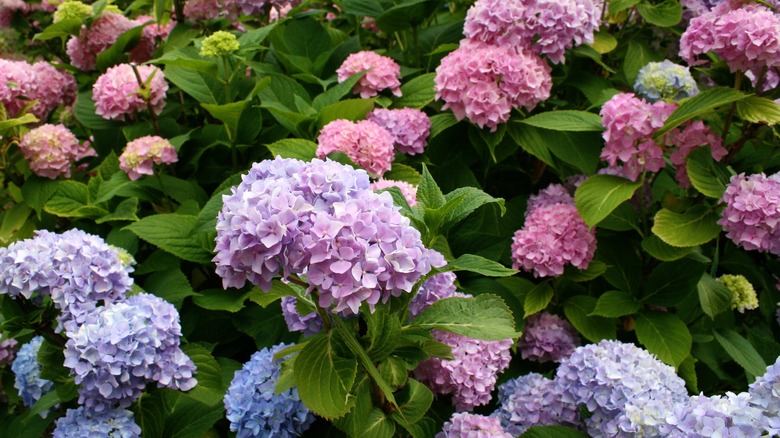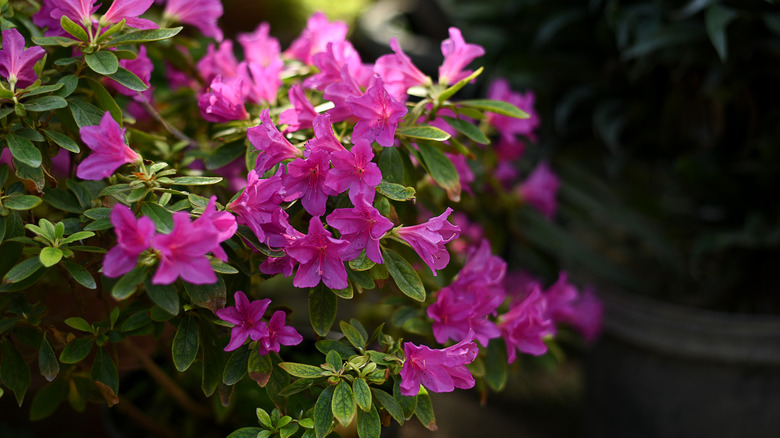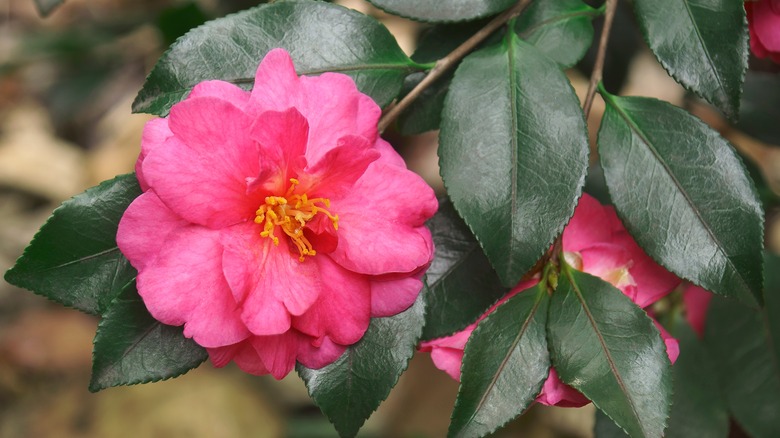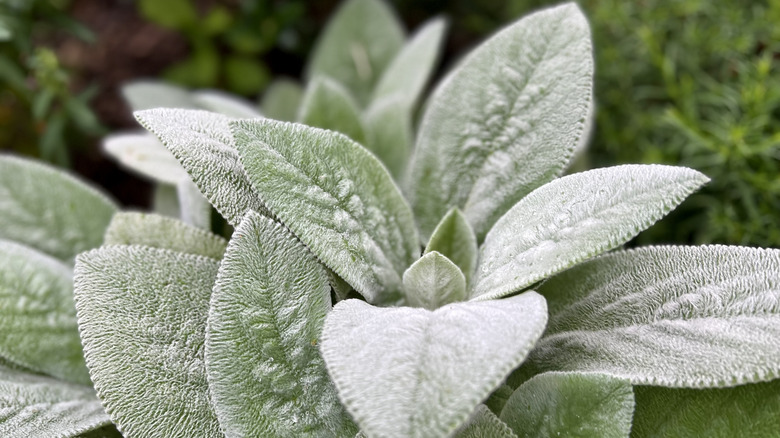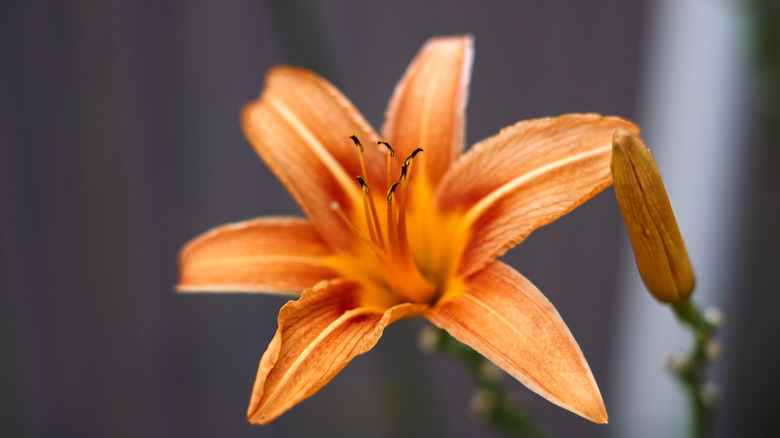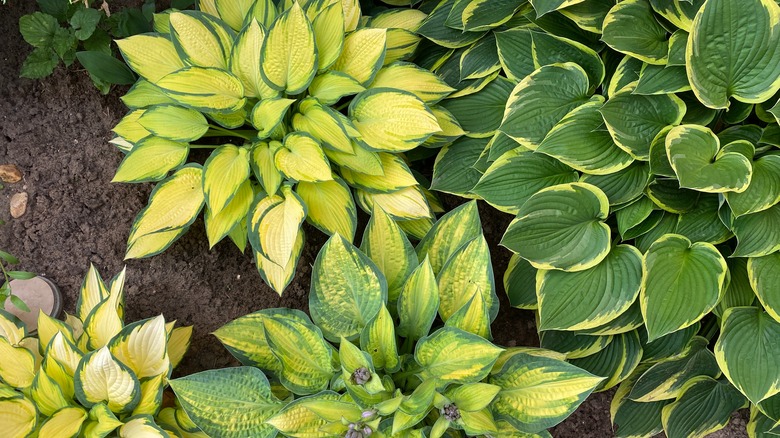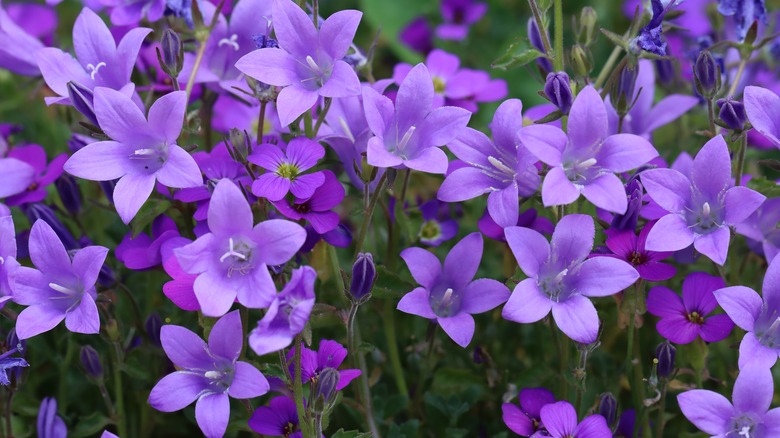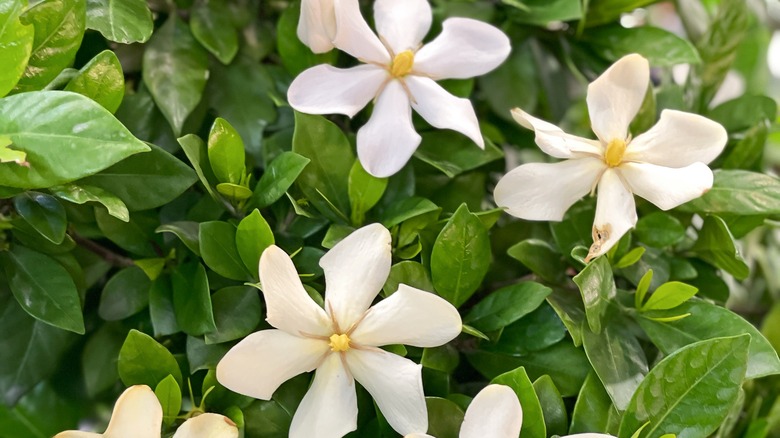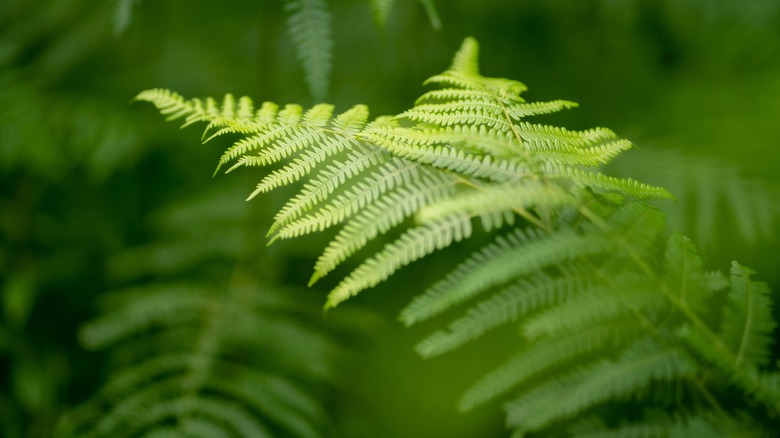Companion Plants That Will Be Your Hydrangeas Best Friend
Hydrangeas (Hydrangeas) are a favorite summer flower for gardeners. The cluster of delicate flowers grows in shades of blue, pink, purple, and white. They're loved because shrubs can take up a lot of room in a garden or yard and make quite a statement. Luckily for gardeners, as well, hydrangeas are fairly easy to grow, preferring rich soil, partial shade in the afternoon, and consistent waterings, about once per week.
It's important to note that hydrangeas can thrive in both acidic and alkaline soils, and some hydrangea varieties can change colors based on the soil's pH. As a general rule of thumb, blue hydrangeas are the effect of acidic soils while alkaline soils create pink hydrangeas. The pH of the soil, as well as other care needs, factor into which companion plants are best for hydrangeas. Not only do you want the flowers to look good together, but you want them to both thrive.
1. Azaleas
Another beautiful shrub to add to the garden is the azalea (rhododendron). It blooms in a variety of shades of pink and red and can be either an evergreen or deciduous shrub. Hydrangeas and azaleas make great companion plants because they both prefer shade and soil that drains well. However, azaleas prefer acidic soil, so be sure your hydrangea variety likes acidity as well. Azaleas tend to bloom in the early spring to early summer, and hydrangeas bloom from the late spring throughout the summer, so you'll be guaranteed colorful flowers for months.
2. Camellias
If you want a garden that blooms throughout the year, plant camellias with your hydrangeas. Camellias (Camellia) can be shades of red, pink, and white and have shiny green leaves. They love partial shade and acidic soil that's well-draining, just like hydrangeas. Camellia plants flower between the fall and the spring, usually from October or November to April or May.
3. Lamb's ear
Lamb's ear (Stachys byzantina) is a delicate ground cover that will be a pretty greenery accent to your garden flower beds. The leaves have a greenish-silvery color and a velvety feel. When lamb's ears flower in the summer, they grow little purple flowers. These are easily maintained plants that will thrive in partial sun next to your hydrangeas. However, when watering the garden, be careful not to get lamb's ear leaves wet, as that can lead to rot.
4. Daylilies
Daylilies (Hemerocallis), despite their name, are not actual lilies, but they get their name from their tropical, lily-like appearance. The trumpet-shaped flowers are known for their vibrant shade of orange but can also range in color from white to deep red. The color combination of orange with pink or blue hydrangeas will be a unique scheme for your garden. Daylilies easily grow in a variety of soil types and in partial shade, though they'll grow fewer flowers, so they'll pair perfectly with hydrangeas.
5. Hostas
Hostas (Hostas) are perennial plants loved for their variegated leaves that have green edges and white in the center. Similar to hydrangeas, hostas prefer acidic soil and shade, so the two will thrive together. Because they grow to a maximum of 48 inches tall, hostas tend to be great border plants, so you may want to use them around the edges of your garden or flower bed. However, hostas are a favorite snack for deer, so if you have a lot of deer in your area, you may want to consider protection to prevent your flowers from being eaten.
6. Campanula
Also called bellflowers, campanulas (Campanula) bloom stunning purple trumpet-shaped flowers. Unlike other companion flowers on this list, you have to be discerning about the hydrangea variety you plant them with. Campanulas like full sun to partial shade to thrive, which means many hydrangea varieties aren't the best option. However, panicle hydrangeas (Hydrangea paniculata) are a hardy variety and very sun tolerant, which will pair well with campanulas. Both flowers love well-draining, acidic soils as well.
7. Gardenias
Usually known for their smell, gardenias (Gardenia) make a stunning option for your garden. They have soft white petals with a yellow center and dark green leaves that grow on shrubs or small trees, some that may reach 8 feet tall. Shade gardenias from the afternoon sun and keep the soil damp in order for them to thrive. These fragrant flowers will bloom from the spring to the fall, around the same time hydrangeas do.
8. Ferns
Accent your hydrangeas with greenery and texture. Ferns (Tracheophyta) are a lush species with unique, vibrant green leaves. The varieties can span from full sun to full shade, so keep that in mind when choosing a fern for your garden. However, most prefer a lot of shade, which makes them a great companion to hydrangeas. Ferns are also notorious for loving moisture, so keeping the soil evenly moist will ensure lush green foliage. They're perennials and hardy, so they'll grow back every spring, just in time to complement the hydrangeas.
